
|
Wolverhampton's Blue Plaques
North St., Paternoster
Row, Exchange St., St. Peter's Church & the Civic Centre |
 |
| The view looking down North Street from
Queen Square. The building in the distance is the old Town Hall, which
is now occupied by the magistrates' courts. It was built in between 1869
and 1871, in the style of a French Chateau. The building was designed by
Manchester architect Mr. E. Bates and was constructed by Philip Horsman
of Wolverhampton. |
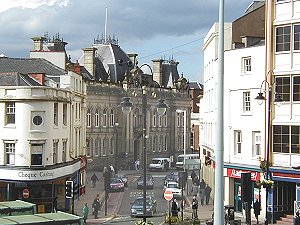 |
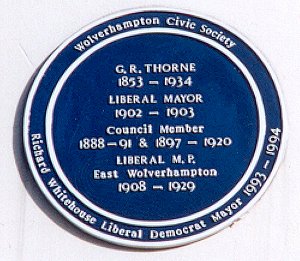 |
Commemorating: G. R. Thorne who was the
last Liberal Mayor from 1902 to 1903
Sponsored by:
Richard Whitehouse, Liberal Democratic Mayor,
1993-4
Location:
North Street, on the side of Edwards pub. |
| Edwards Public House, showing the plaque. |
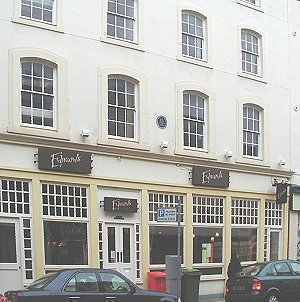 |
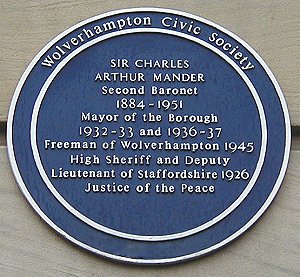 |
Commemorating: Sir Charles Arthur Mander,
Second Baronet.
Sponsored by:
Location:
North Street, on the front of the Magistrates'
Courts. |
| The front of the Magistrates' Courts showing the plaque. |
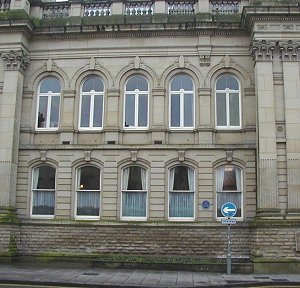 |
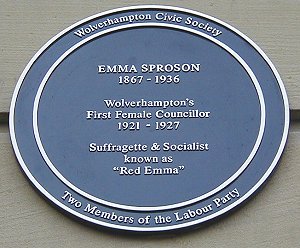 |
Commemorating: Emma Sproson, Wolverhampton's
first woman councillor.
Sponsored by:
Labour Party members
Location:
North Street, on the front of the Magistrates'
Courts. |
|
Emma Sproson was born Emma Lloyd in 1867. She
married Frank Sproson in 1896 and had three children. She was
a very active member of the Indpendent Labour Party and of the
suffragette movement. She was imprisoned several times.
Emma left the party in a split in 1927, stood as an
Independent Socialist but lost. Her public career ended and
she died as a recluse.
The front of the Magistrates' Courts showing the
plaque. This was the Town Hall during Emma's time as a
councillor.
|
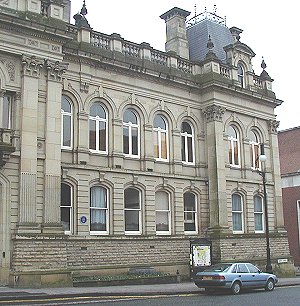 |
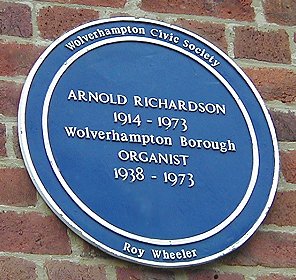 |
Commemorating: Arnold Richardson, Borough
Organist from 1938 to 1973.
Sponsored by:
Roy Wheeler.
Location:
North Street, on the front of the Civic Hall. |
| The Civic Hall, with the plaque on the extreme left. |
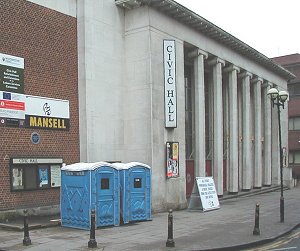 |
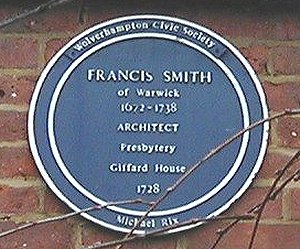 |
Commemorating:
Francis Smith, architect. Sponsored by:
Michael Rix.
Location:
North Street, on the front of Giffard House.

|
| Giffard House, showing the plaque above the front door.
Peter Giffard of Chillington decided to replace his town house with a
larger building which became known as Giffard House. It was built
between 1727 and 1734 by William Hollis, and was designed by Warwick
architect, Francis Smith, who was doing some work at Chillington at the
time. When completed the house and chapel were handed over to the
Roman Catholic authorities, who still continue to use it today. |
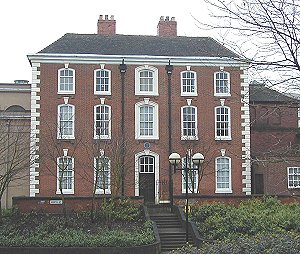 |
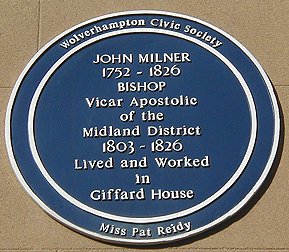 |
Commemorating: John Milner who was the first
Catholic Bishop of Wolverhampton from 1803 to 1826.
Sponsored by:
Pat Reidy
Location:
Paternoster Row, On the side of the Chapel of
St. Peter & St. Paul. |
| The photograph shows the plaque on
the side of the chapel. Bishop Milner lived at Giffard house
from 1803 until his death in 1826. The chapel was originally situated
inside the house and was extended in 1813. Bishop Milner decided to
build an external chapel and set aside £1,000 for the project.
Unfortunately he died before work on the new chapel could begin. He is
buried behind the chapel, inside the house. |
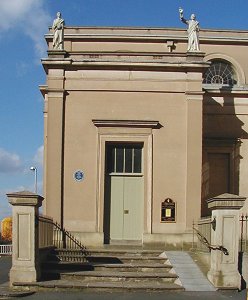 |
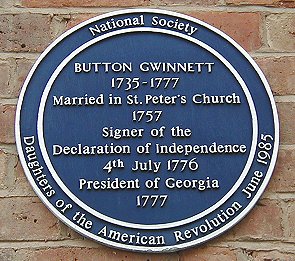 |
Commemorating:
Button Gwinnett was Governor of Georgia, and a signatory of the
Declaration of Independence. Sponsored by:
Daughters of the American Revolution
Location:
Exchange Street, on the side of St. Peter's House.

|
Button Gwinnett, who was a merchant from Bristol, lived
in Wolverhampton from 1755 to 1762. He married Anne Bourne in 1757 and
moved to America in 1762.
St. Peter's house was built in 1852 by Richard Cope, and was immediately
sold to George Cope for £2,000. George was the wine merchant who owned
and ran Copes Wine Lodge in Queen Square. The house was purchased by St.
Peter's Church in 1974, and the ground floor is used as a tea shop. The
Town Centre Team Ministry uses the house for its work with some of the
district churches. |
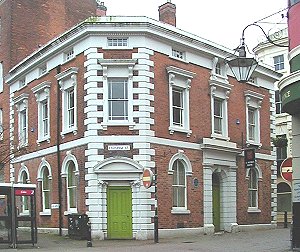
St. Peter's House showing the plaque. |
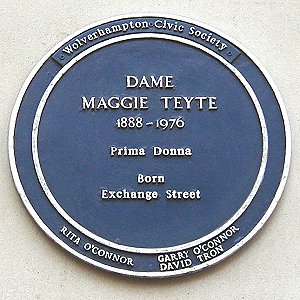 |
Commemorating: Dame Maggie Teyte who was an
international singer.
Sponsored by:
Rita and Garry O'Connnor, and David Tron.
Location:
Exchange Street. |
| The plaque is situated on the building that is opposite
the old Bird-In-Hand Yard. Dame Maggie Teyte was one of the great
opera singers of the 20th Century. Her father, owned the Old Still Inn
in King Street. She was sent to the Royal College of Music and later
studied in Paris under Jean de Reszke. In 1908 she was selected to sing
the title role Melisande at the Opera de Commique in Paris. This was the
start of a career which was to last for nearly 60 years. |
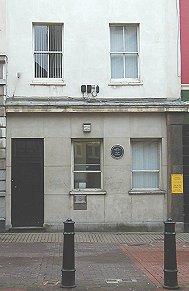 |
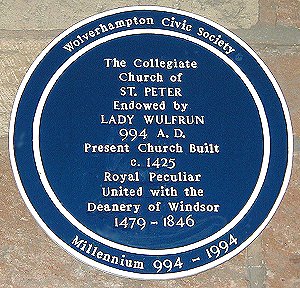 |
Commemorating: St. Peter's Church millennium
in 1994.
Sponsored by:
Wolverhampton Civic Society.
Location:
Inside the porch of St. Peter's Church. |
| St. Peter's Church porch. In 994 Lady Wulfruna
endowed the minister church which was originally dedicated to St. Mary,
with extensive land. Just over a century later the church was dedicated
to St. Peter & St. Paul, and then to St. Peter alone.
The church was
served by a college of secular canons and had the status of a Royal free
chapel. After the Norman conquest, King William granted the church to
his chaplain, Samson of Bayeux. Most of the present church dates from
the rebuilding in the mid and late fifteenth century. The Chancel,
designed by Ewan Christian was completed in 1865. |
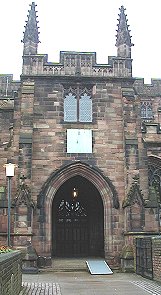 |
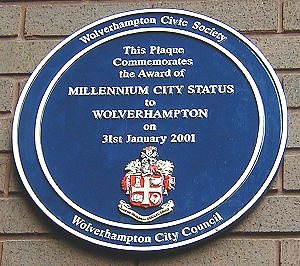 |
Commemorating: The millennium and the
achievement of city status
Sponsored by:
Wolverhampton City Council
Location:
The Civic Centre |
| The plaque is situated on the left-hand side of the main
entrance to the Civic Centre. It was unveiled by the Mayor, Joyce Hill. |
 |
|